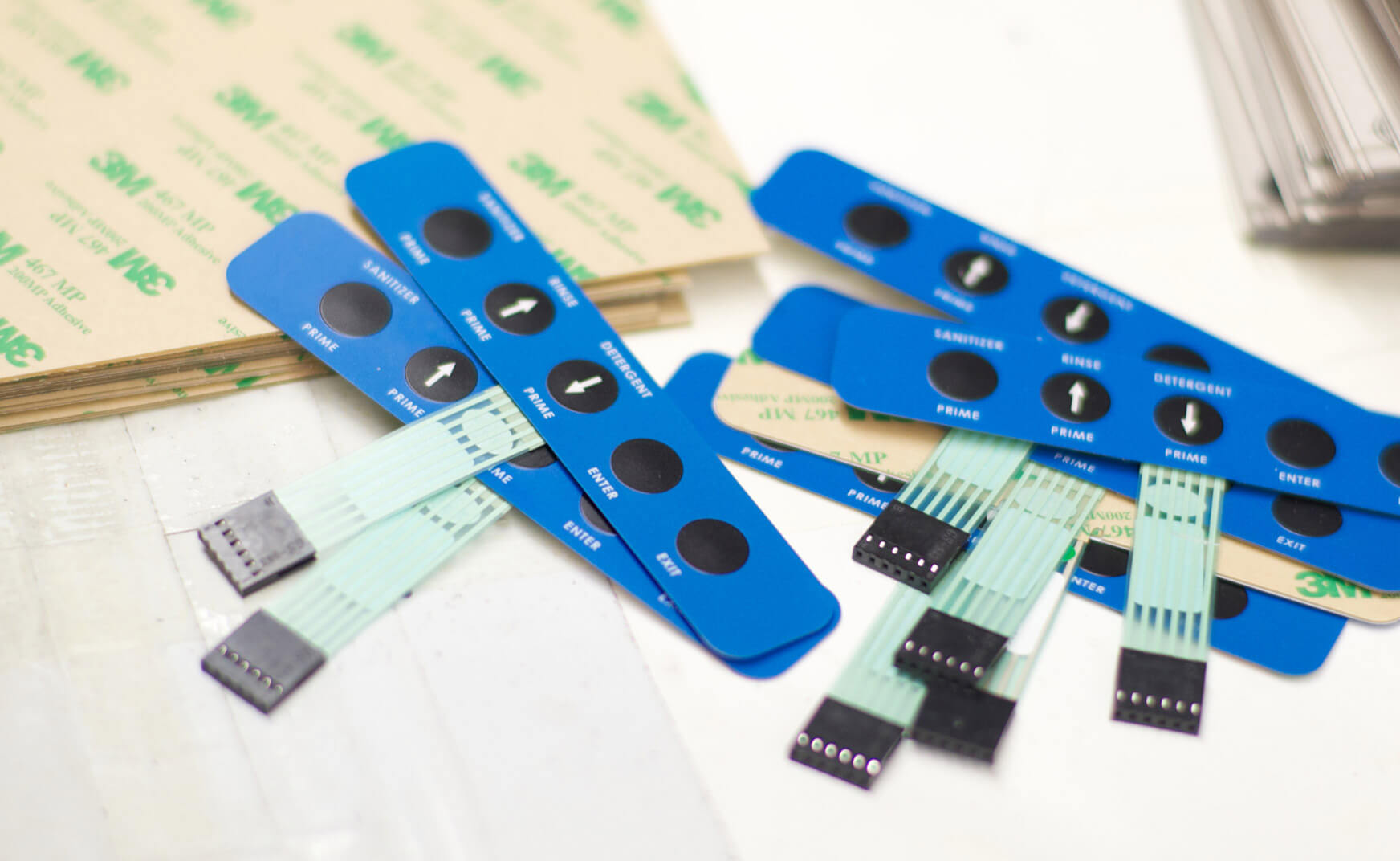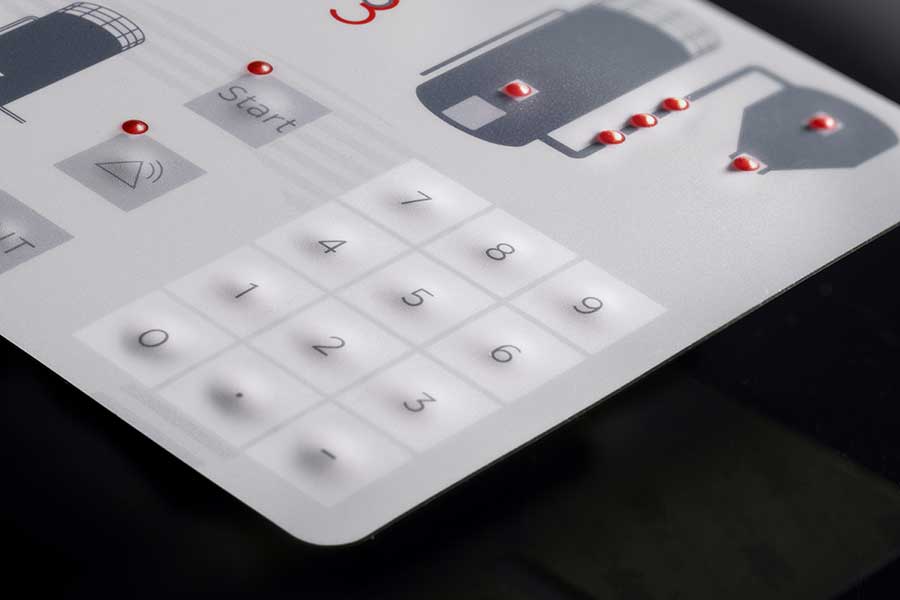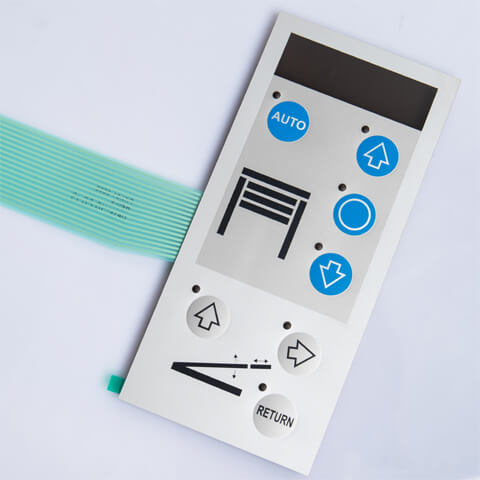Why Choosing the Right Membrane Switch Is Important for Your Item Style
Why Choosing the Right Membrane Switch Is Important for Your Item Style
Blog Article
Recognizing the Functionality of Membrane Layer Changes for Interface Instruments
The capability of membrane layer switches over represents a substantial development in customer interface layout, combining efficiency with visual flexibility. These switches run with a multi-layered structure that equates customer interactions right into electric signals, permitting both small formats and durability against ecological variables. As sectors increasingly focus on customer experience, understanding the subtleties of membrane button modern technology becomes important. What effects do these developments hold for future applications, and how might they redefine customer communications across various devices?
What Are Membrane Layer Buttons?
Membrane layer buttons are innovative interface gadgets that promote individual communication with digital tools. These flexible parts include multiple layers, including a graphic overlay, spacer, and a printed circuit layer. The design permits for a smooth integration right into various digital gadgets, boosting both the visual and functional aspects of interface.
Membrane layer switches are commonly utilized in a large range of applications, from home appliances to industrial machinery and medical devices. Their building and construction typically includes a slim profile, making them an excellent option for compact layouts. The tactile responses supplied by these buttons can be engineered to meet details individual preferences, making certain efficient communication in between the individual and the gadget.
Durability is an additional substantial benefit of membrane switches, as they are resistant to dirt, moisture, and chemicals, which boosts their life expectancy sought after settings. Additionally, these buttons can be tailored in terms of form, size, and visuals layout, enabling branding and user-specific functions. On the whole, membrane switches over represent a sensible remedy for boosting customer experience in digital devices, combining functionality with visual allure in an effective way.
Just How Membrane Switches Job
Operating on a simple concept, membrane layer changes use a split construction to register customer input effectively. Each switch is composed of multiple layers, including a published circuit layer, a spacer layer, and a leading visuals layer, which are designed to function together seamlessly. When a customer presses the leading layer, it compresses the spacer layer, bringing the conductive elements of the circuit layer right into contact with each other.
This contact develops a closed circuit, signaling the gadget to carry out a specific feature. The style permits different arrangements, including tactile feedback, which can improve the user experience by giving a physical experience upon activation. The products used in membrane layer switches commonly consist of adaptable substrates, such as polyester or polycarbonate, which guarantee toughness and strength versus wear and tear.

Key Benefits of Membrane Buttons

Another significant advantage is their density. Membrane switches are thin and light-weight, which allows producers to save room in their tools without compromising functionality. This function is particularly beneficial in applications where weight and quantity are crucial considerations.
In addition, membrane layer switches are immune to dirt, dampness, and chemicals, boosting their longevity. This resilience prolongs their life expectancy and reduces the need for regular substitutes, leading to expense savings in time.
In addition, the tactile comments given site by membrane layer switches can be enhanced to boost customer interaction. They can consist of functions such as elevated buttons or distinct clicks, boosting usability and customer experience.
Applications Across Industries
Interface gadgets using membrane buttons are common in a broad array of markets, showcasing their adaptability and capability. Membrane Switch. In the clinical industry, membrane layer buttons are important to tools such as analysis equipment and patient surveillance systems, where their durability and simplicity of cleansing are important for maintaining health criteria. In the automobile industry, these switches are utilized in dashboard controls and infotainment systems, giving a smooth and modern interface for customers.
Additionally, the customer electronic devices field take advantage of membrane switches in appliances and portable tools, where portable design and easy to use interfaces enhance customer experience. Industrial applications additionally leverage membrane layer changes for control panels in equipment and automation systems, stressing their toughness and resistance to extreme environments.
In the aerospace and protection markets, membrane buttons are utilized in cabin controls and tools, where reliability and efficiency under extreme conditions are paramount. Furthermore, the video gaming market increasingly incorporates membrane buttons in controllers and arcade makers, contributing to an interesting my website individual experience. Overall, the convenience of membrane layer switches over enables their extensive usage throughout various sectors, highlighting their significance in modern-day customer interface design.
Future Fads in Membrane Change Innovation

Furthermore, the usage of advanced products, such as polycarbonate and polyester movies, is anticipated to rise, offering boosted toughness and resistance to environmental stress factors. These materials contribute to the total durability of membrane layer buttons, making them ideal for harsher commercial applications.
In addition, the consolidation of clever innovation, including IoT connectivity, will make it possible for membrane switches to connect with other devices and systems, facilitating a more interactive user experience. This pattern aligns with the expanding need for smart tools throughout various markets, from health care to consumer electronics.
Last but not least, personalization options are expected to increase, permitting suppliers to produce bespoke options customized to specific customer demands and choices. These advancements will position membrane buttons as vital parts in the development of individual interface our website innovation.
Verdict
In verdict, membrane layer switches represent a crucial innovation in user interface innovation, providing a trusted and functional option for varied digital applications. As innovations in material science and touch noticing technologies proceed, the capability and applicability of membrane layer buttons are anticipated to broaden, reinforcing their importance in modern-day digital devices.
Report this page